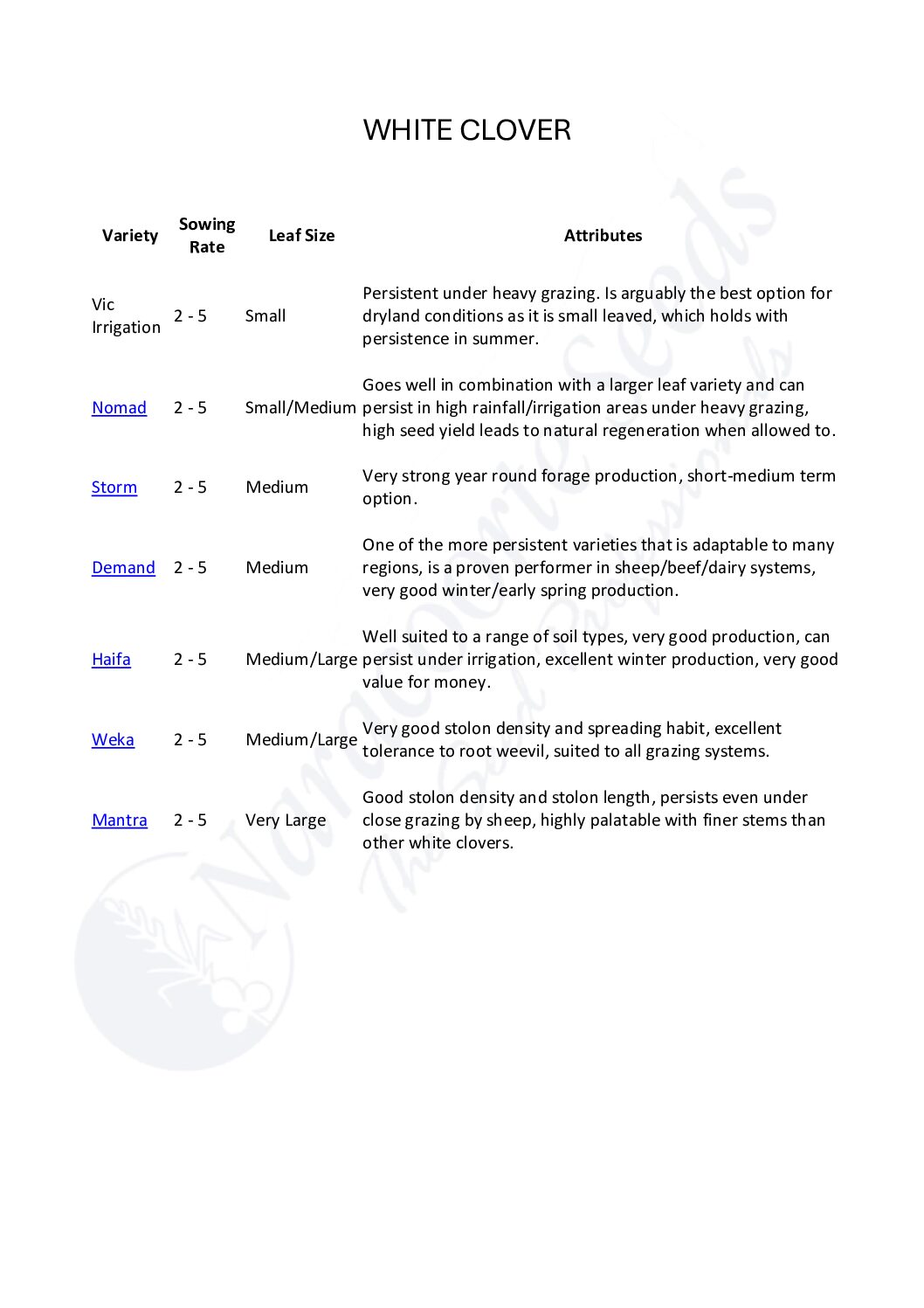Locally white clover is known to only persist under irrigated and high rainfall (+700mm) conditions. Some smaller leafed varieties have lasted for 2 – 3 years if conditions are favourable but generally irrigated areas are the best fit for white clover. White clover is slow to establish from seed and this trait has been a problem in recent years as the new ryegrass varieties tend to out compete the clover and poor clover content results. It is vital to graze the pasture early to allow light into the crop to ensure your clover can compete and thrive. Seeds per kilogram can range significantly between coated and bare seed and this can be a factor with inadequate white clover population within a pasture.
| Variety | Sowing Rate | Leaf Size | Attributes |
|---|---|---|---|
| Vic Irrigation | 2 – 5 | Small | Persistent under heavy grazing. Is arguably the best option for dryland conditions as it is small leaved, which holds with persistence in summer. |
| Nomad | 2 – 5 | Small/Medium | Goes well in combination with a larger leaf variety and can persist in high rainfall/irrigation areas under heavy grazing, high seed yield leads to natural regeneration when allowed to. |
| Storm | 2 – 5 | Medium | Very strong year round forage production, short-medium term option. |
| Demand | 2 – 5 | Medium | One of the more persistent varieties that is adaptable to many regions, is a proven performer in sheep/beef/dairy systems, very good winter/early spring production. |
| Haifa | 2 – 5 | Medium/Large | Well suited to a range of soil types, very good production, can persist under irrigation, excellent winter production, very good value for money. |
| Weka | 2 – 5 | Medium/Large | Very good stolon density and spreading habit, excellent tolerance to root weevil, suited to all grazing systems. |
| Mantra | 2 – 5 | Very Large | Good stolon density and stolon length, persists even under close grazing by sheep, highly palatable with finer stems than other white clovers. |


